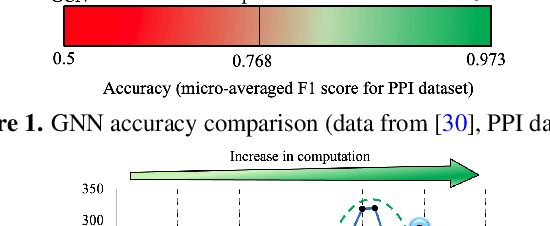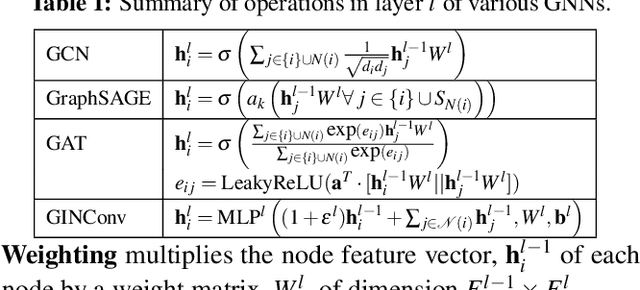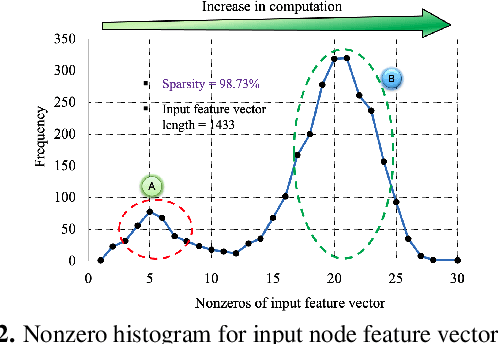GNNIE: GNN Inference Engine with Load-balancing and Graph-Specific Caching
Paper and Code
May 21, 2021



Analysis engines based on Graph Neural Networks (GNNs) are vital for many real-world problems that model relationships using large graphs. Challenges for a GNN hardware platform include the ability to (a) host a variety of GNNs, (b) handle high sparsity in input node feature vectors and the graph adjacency matrix and the accompanying random memory access patterns, and (c) maintain load-balanced computation in the face of uneven workloads induced by high sparsity and power-law vertex degree distributions in real datasets. The proposes GNNIE, an accelerator designed to run a broad range of GNNs. It tackles workload imbalance by (i) splitting node feature operands into blocks, (ii) reordering and redistributing computations, and (iii) using a flexible MAC architecture with low communication overheads among the processing elements. In addition, it adopts a graph partitioning scheme and a graph-specific caching policy that efficiently uses off-chip memory bandwidth that is well suited to the characteristics of real-world graphs. Random memory access effects are mitigated by partitioning and degree-aware caching to enable the reuse of high-degree vertices. GNNIE achieves average speedups of over 8890x over a CPU and 295x over a GPU over multiple datasets on graph attention networks (GATs), graph convolutional networks (GCNs), GraphSAGE, GINConv, and DiffPool, Compared to prior approaches, GNNIE achieves an average speedup of 9.74x over HyGCN for GCN, GraphSAGE, and GINConv; HyGCN cannot implement GATs. GNNIE achieves an average speedup of 2.28x over AWB-GCN (which runs only GCNs), despite using 3.4x fewer processing units.
 Add to Chrome
Add to Chrome Add to Firefox
Add to Firefox Add to Edge
Add to Edge